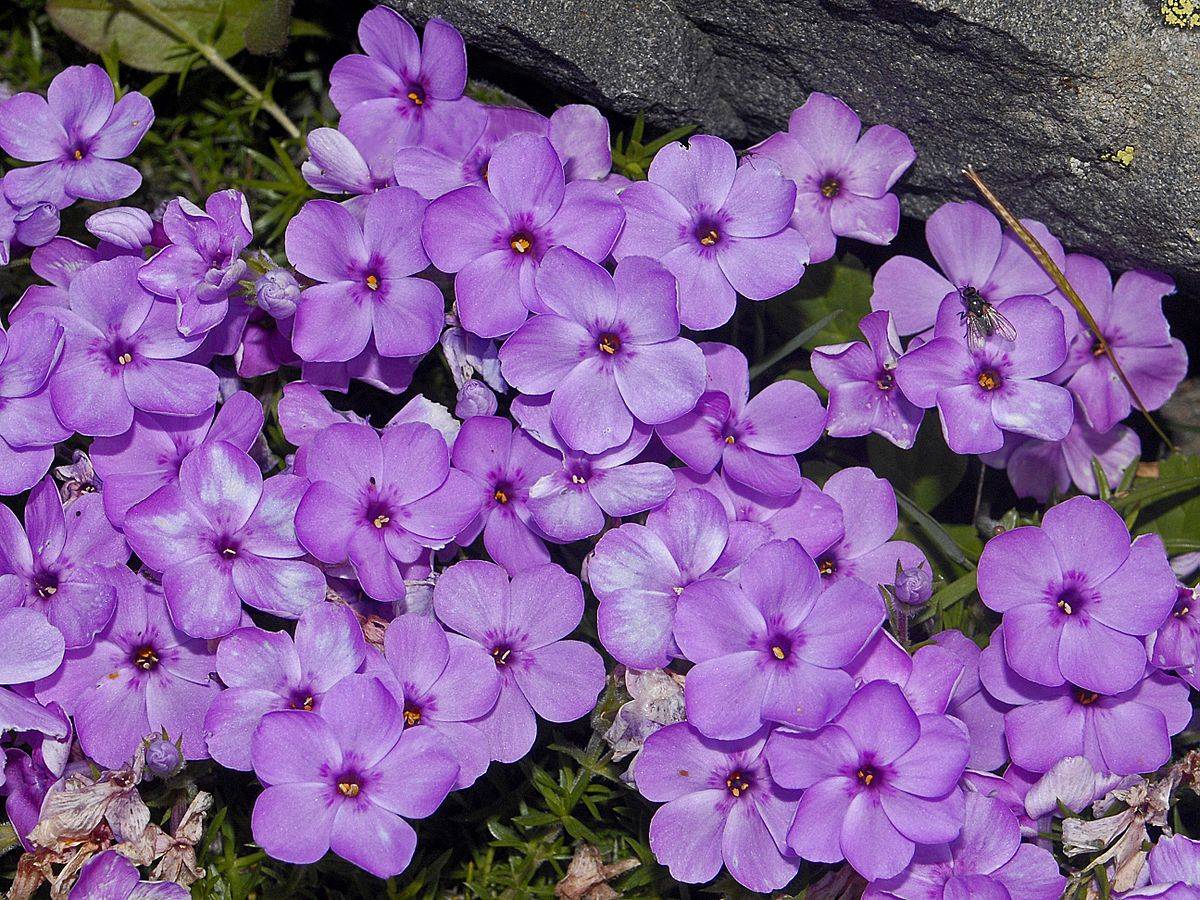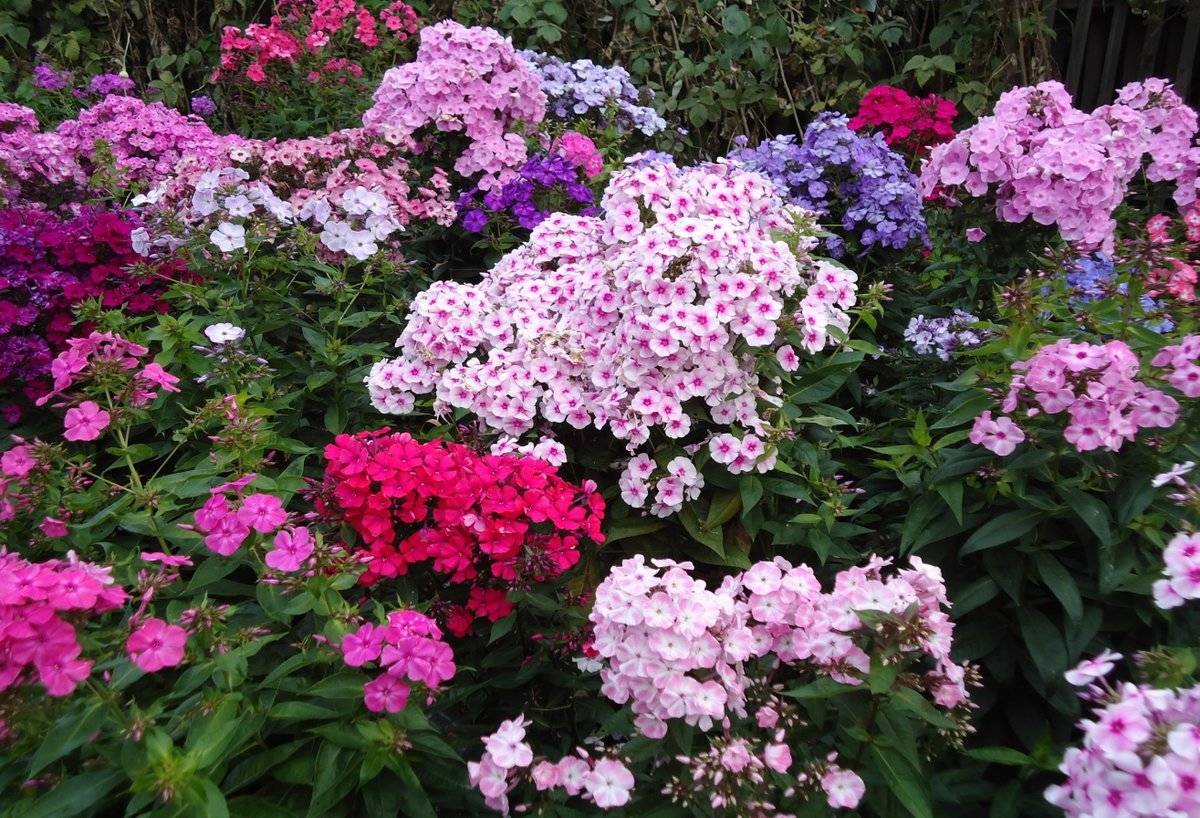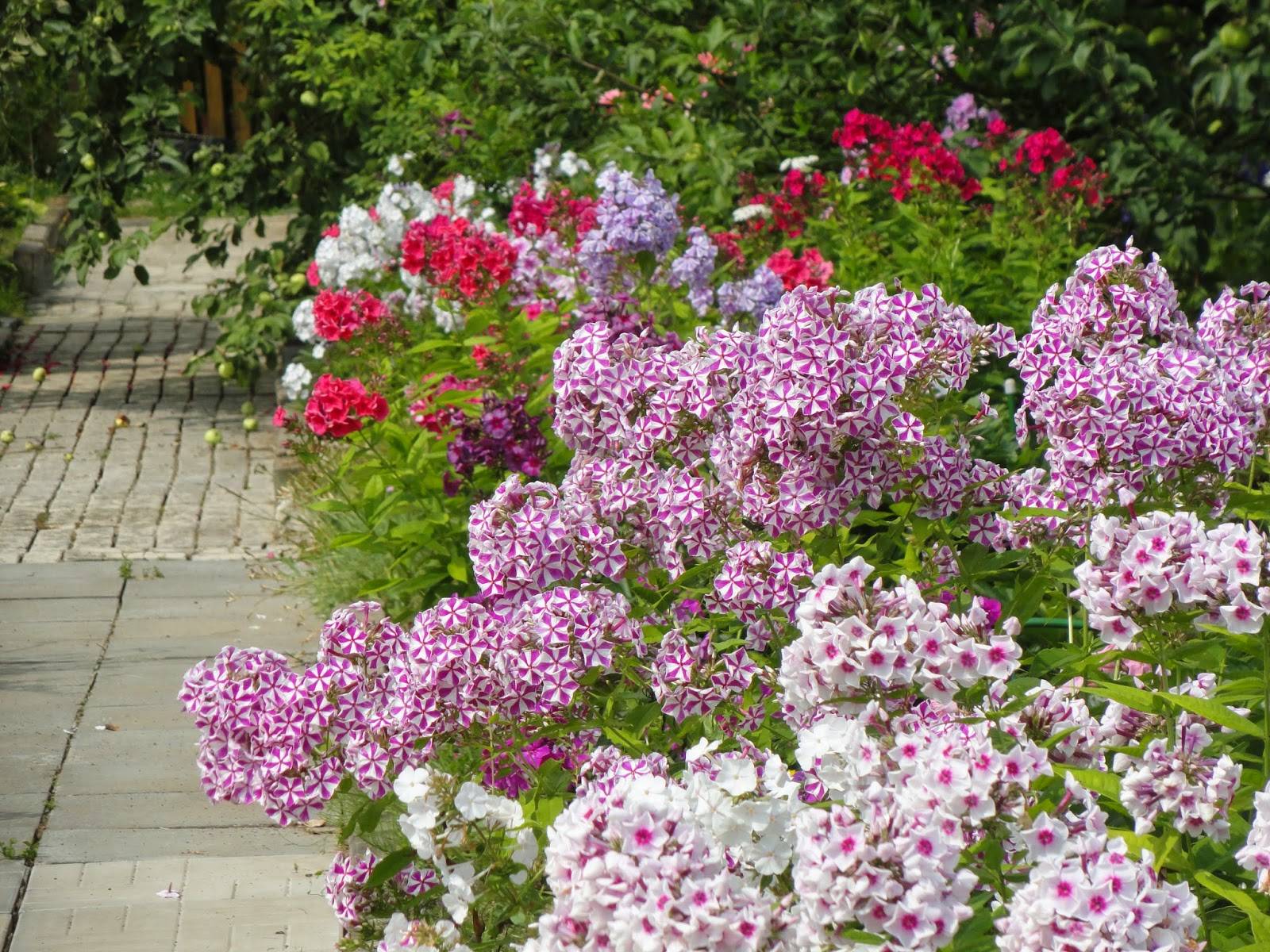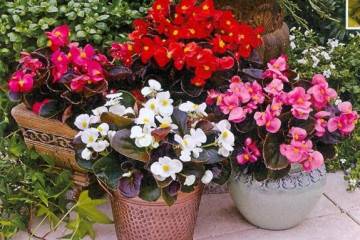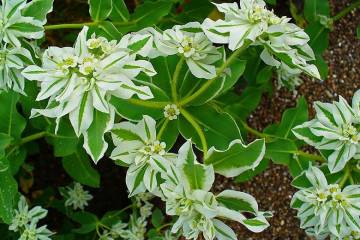Phlox flowers: varieties, what they look like, types
Content:
The elegance of phlox and the brightness of their peduncles will decorate any flower garden. The decorative qualities of the plant will not leave indifferent any gardener. Moreover, they are unpretentious in care, adapted to any degree of illumination, and are able to grow on different types of soil. They have good cut resistance, so they stand in bouquets for a long time.
Types of annuals and perennials
Phlox flowers belong to the cyanide family. They have many varieties, most of which are perennials. In addition, specimens differ in stem height and color shades. They are often used in the creation of flower arrangements. They have a long flowering period and are frost-resistant.
Despite the variety of species, gardeners prefer no more than 20 of them. What are the types of phlox, the features of their planting and growing - the necessary information for novice florists.
Paniculate
Another name is Paniculate. In everyday life, it is called the Panicle. The flowering period is from August to mid-September. It is characterized by large flower stalks and rich aroma. Phlox is found pink, red, purple and even spotted. The exception is yellow phlox.
Phlox Early Blue deserves special attention. It blooms earlier than other paniculate varieties. In daylight, the flower is not attractive, but at dusk it transforms and strikes with extraordinary blue or bluish tints.
Plant height varies from 0.4 to 1.2 m. They abound in a huge number of lush leaves. Up to 20 shoots are formed on the stem.
Subulate
Subulata or phlox Subulate. The height of the stems of this crumb reaches 15 cm. It forms small 2 - 4 inflorescences with a color in pale lilac or pink tones. Thanks to this structure, a blooming carpet is formed at the site of the Subulat planting, which among the common people led to the appearance of another name - Sod phlox. Early flowering from May to June.
This type of flower is ideal for border decoration. Looks great in pots and baskets. Reacts perfectly to a haircut, which makes it possible to form a curly composition.
Groundcover
Another representative of phlox of perennial low-growing varieties is Creeping. The maximum height of shrubs is 20 cm. It is characterized by the formation of many branches and umbrellas of flowers. Some copies have up to 15 pieces. Blossoming - May and June. Pink, red and purple tones predominate.
Canadian
The Canadian phlox flower is classified as medium-sized. Plant height reaches 0.4 m. Peduncles are larger than those of undersized species, white or lilac in color. The flowering period is in late spring and early summer. The inflorescences are collected in umbrellas up to 10 cm in diameter. The Canadian phlox is picky about the soil. Peat and forest soils are absolutely not suitable for him. It is better to provide a light substrate with the addition of humus.
Phlox Douglas
One of the representatives of the carpet plant species is the Douglas phlox. It is prized for its long flowering period. In one season, he has two periods of inflorescence formation:
- from May to June;
- from August to September.
It is characterized by a small and narrow leaf shape. Forms white, lavender or pink flowers. It is somewhat reminiscent of wildflowers.
Varieties by color of peduncles
Most florists pay attention to the varieties of phlox of the Panicle type. All about phlox, which are distinguished by their bright colors:
- Sherbet Coctail. Inflorescences are whitish-creamy. They often have pinkish blotches and a yellowish edging.
- Laura. Large-flowered inflorescences of a lilac shade with striped inserts in the middle.
- Starfire. The color of the inflorescences is dark red.
- Olympiad. The flowers are giants of silvery-pink color, which reach 5.5 cm in diameter.
- Eva-Cullum. A shade of pink, crimson and hot pink flowers. Small-flowered.
- Peppermint Twist and Mishenka. Snow-white flowers with a pink brushstroke on the petals.
- Bud. It has an original difference in that the flowers do not bloom, but remain in the budding stage, having a lilac hue.
- Feelings. Belonged to the species of non-flowering Dutch species. That is, they have a certain shape of inflorescences - needle-like buds that do not bloom. In this state, they are able to hold out for up to 3 months. Phlox types by bud color: Natural Feelings - lilac-pink, Midnight Feelings - brown-purple, Pleasant Feelings - light green, Red Feelings - purple-lilac.
- Karolinsky. A rare variety in amateur flower beds. It is characterized by thick leaves with a rich color. The shape of the inflorescences is pyramidal. The shade can be white or pink.
What do the leaves of a flower look like?
In nature, there are up to 80 varieties of these flowers. What phlox look like, the shape of their stems and leaves, depends on the characteristics of a particular variety. By the type of stems, the plant is classified:
- upright;
- lying;
- ascending.
As for the leaves, their shape is much more varied:
- sedentary;
- opposite or alternate;
- whole;
- lanceolate;
- linear subulate.
Which variety is better for a beginner
Novice growers need to focus on those varietal phloxes that do not require special care. Of the perennials, it is recommended to pay attention to paniculate species. The most attractive ones are:
- The Scarlet Flower;
- Natasha;
- Misha;
- Success;
- Festival and others.
In addition to perennials, one should dwell on annual plants, which can be grown without much difficulty from seeds:
- Twinkling Star;
- Drummond;
- Phlox is white.
Phlox-like flowers
There are flowers that look like phlox. Beginners can easily confuse these flowers with hydrangea or hilia. The latter was imported from America, easy to breed and picky to care for. Phloxes have similarities with such specimens as the common yarrow and allisum.
"Fire flower" in landscape design
Phloxes are the main element of any flower bed, as they are universal. They can be used in any direction:
- landing directly on flower beds;
- decoration of garden paths;
- use when creating alpine slides.
The main factor that you need to pay attention to when choosing a planting material is the flowering period of the plant. If done correctly, the flower bed will bloom from early spring to late autumn.
One example of the use of phlox in landscape design is a joint linear planting of phlox with hosts and daylilies. This combination benefits from the fact that the flowering of plants occurs one by one, drawing attention to a particular type of flower.
The next moment, on which the beauty and originality of the flower bed depends, is the landing site. In this case, the height of the plants is taken into account. Low-rise specimens can be located in elevated areas. Sunny places are reserved for tall plants that can withstand exposure to direct sunlight. For example, Phlox Flame, a representative of the paniculate species.
Neighborhood with other plants on the site
The combination of plants is the most crucial moment, since phloxes have a bright character. The selection of partners is carried out in the following way:
- It is best to plant alpine asters, veronica, geranium, cloves, highlander and low bells for summer varieties.
- The specimens blooming in late summer and early autumn coexist well with the hosts. Used to decorate tracks. It is not recommended to combine them with primroses or dwarf irises.
- Plants blooming before and after the main specimen survive well with phlox. These include edelweiss, dwarf wormwood, yaskolka. For bright coral inclusions in the composition, rejuvenated is used.
- Always a good neighborhood with lilies, delphiniums, heleniums, peonies, lupines and pyrethrum.
- In the late flowering period, that is, in the fall, phloxes perfectly complement barberry or spirea bushes. On an alpine slide, it is best to plant next to crocuses and snowdrops.
Phlox is a great option for decorating a flower bed, even a beginner can grow them. They do not require careful maintenance. But, in rare cases, this plant can be affected by powdery mildew. If the minimum requirements are met during planting and further care, the plant will turn the garden into a vibrant composition.


